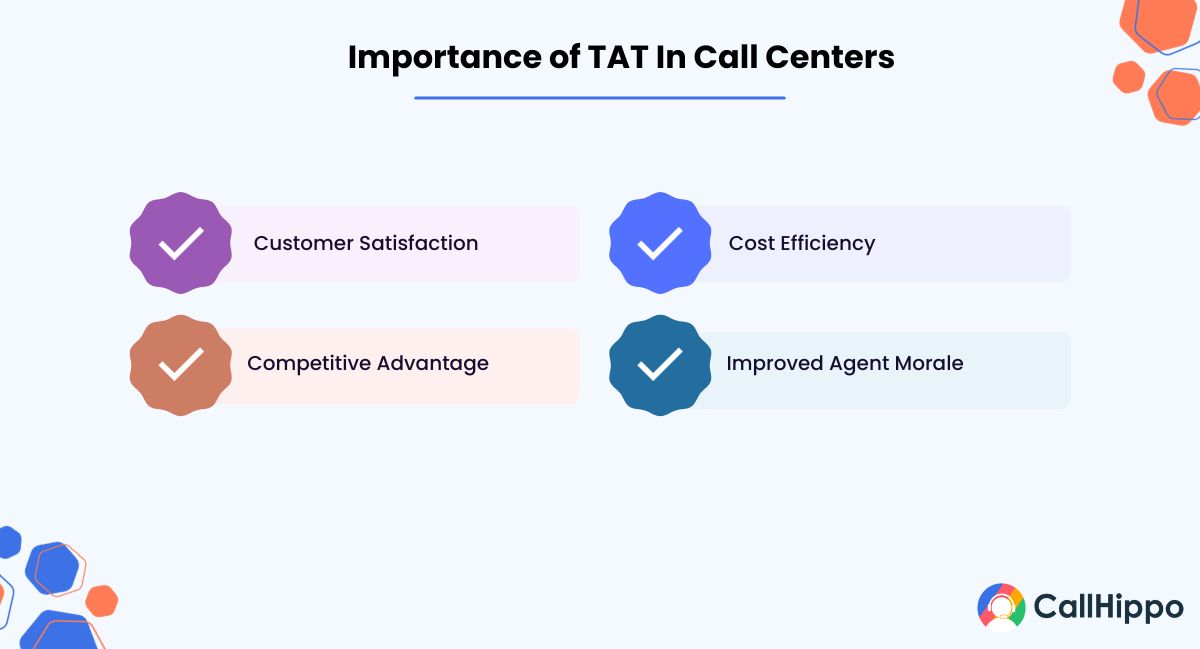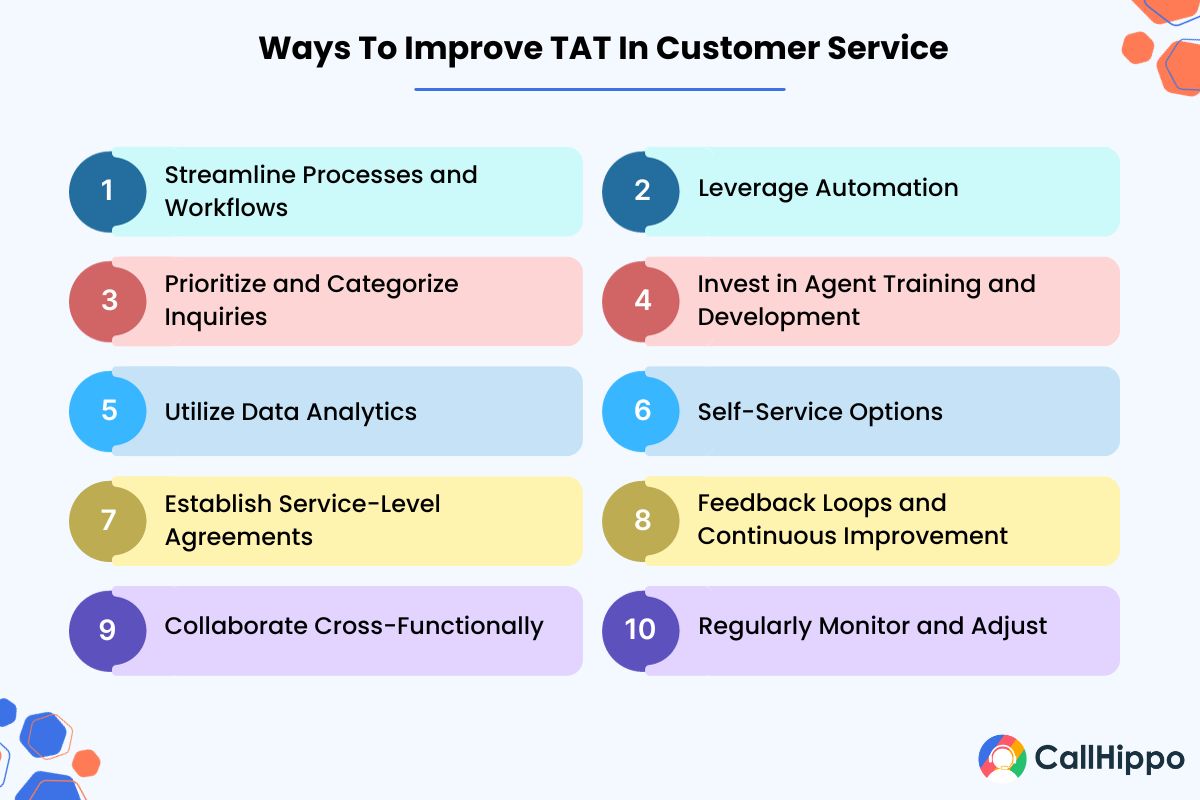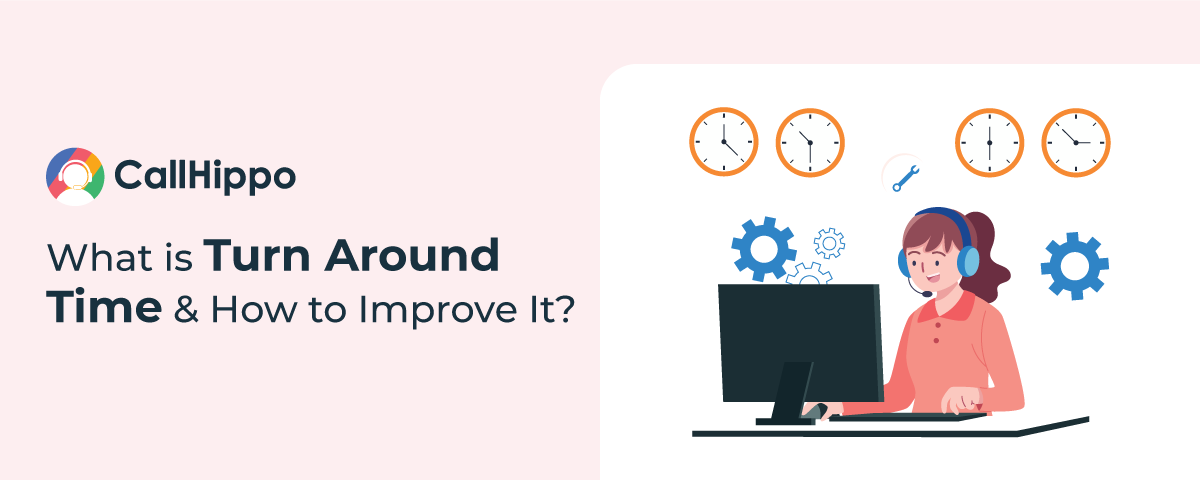Good customer experience is the top-most priority of every business. The one crucial metric that plays a pivotal role in measuring and enhancing customer service quality is Turnaround Time (TAT). Turnaround Time is a metric used to gauge the speed at which customer service requests or inquiries are resolved. For calls, the benchmark TAT is 3 minutes or less.
In this comprehensive blog post, we’ll delve into what TAT in customer service entails, why it’s essential in a call center environment and strategies to improve it.

"Turnaround time is a key metric to track to increase customer satisfaction and retention. Actively seek feedback from your customers regarding their service experiences. This feedback is invaluable in identifying pain points and areas for improvement. Regularly review customer feedback and use it as a basis for refining your processes and training programs."
What Is TAT in Customer Service?
TAT, which stands for Turnaround Time, is a critical performance indicator used to evaluate the efficiency and responsiveness of a customer service team. It refers to the total time taken to address and resolve customer inquiries or issues from the moment they are raised until they are satisfactorily resolved. TAT encompasses the entire process, from the initial point of contact, such as a phone call or email, to the final resolution and closure of the customer’s concern.
Why Is TAT in Call Centers Important?
Turnaround time can prove beneficial in many instances, and below are the main points that reflect why TAT in call centers is important.

1. Customer Satisfaction
Efficient TAT directly impacts customer satisfaction. When customers receive timely responses and quick resolutions to their problems, they are more likely to be satisfied with the service provided. This leads to higher customer retention rates and positive word-of-mouth recommendations.
2. Cost Efficiency
A well-managed TAT can lead to cost savings for the call center. Faster issue resolution reduces the need for lengthy interactions and multiple follow-ups, allowing agents to handle more cases within the same timeframe.
3. Competitive Advantage
In today’s competitive market, customers have high expectations for rapid problem resolution. Call centers that excel in TAT gain a competitive advantage by offering a superior customer experience, which can help them stand out in the industry.
4. Improved Agent Morale
Efficient TAT can also boost agent morale. Agents who can resolve issues quickly and effectively are more likely to feel accomplished and motivated in their roles.
How to Improve TAT in Customer Service?
Want to engage better with your customers? Then you need to level up your TAT! Below are some of the most effective tips and best practices for improving TAT in customer service.

1. Streamline Processes and Workflows
Begin your TAT improvement journey by thoroughly examining your existing customer service processes. Identify any bottlenecks, redundancies, or unnecessary steps that may cause delays. Collaborate with your team to simplify and streamline workflows. By doing so, you’ll reduce the time it takes to handle customer inquiries.
2. Leverage Automation
Implementing automation can be a game-changer for TAT improvement. Utilize chatbots, virtual assistants, and AI-driven systems to handle routine, repetitive tasks and inquiries. Automation can provide instant responses to common questions, freeing up your human agents to focus on more complex issues that require their expertise.
3. Prioritize and Categorize Inquiries
Establish a clear categorization and prioritization system for incoming inquiries. Not all customer issues are equal in urgency or complexity. Assign tags or labels to customer cases based on criteria such as urgency, issue type, or customer value. Ensure high-priority cases receive immediate attention, while less urgent ones are addressed efficiently but not at the expense of quality.
4. Invest in Agent Training and Development
Well-trained agents are more equipped to handle customer inquiries swiftly and effectively. Regularly provide comprehensive training to your customer service team, focusing on communication skills, problem-solving abilities, and product knowledge. Ensure agents are up-to-date with the latest information and tools to assist customers promptly.
You May Also Read : How To Train Call Center Agents Effectively?
5. Utilize Data Analytics
Leverage data analytics to gain deeper insights into your TAT performance. Track key metrics such as average resolution time, first response time, and resolution rates. Analyze this data to identify trends, pain points, and areas for improvement. Make data-driven decisions to continuously optimize your processes and resource allocation.
6. Self-Service Options
Empower customers with self-service options. Create and maintain a robust knowledge base, FAQ section, and online tutorials that customers can access 24/7. Encourage customers to find solutions to common issues independently. This not only reduces the volume of inquiries but also promotes customer empowerment and satisfaction.
7. Establish Service-Level Agreements (SLAs)
Implement SLAs that clearly define response and resolution times for different types of inquiries. Ensure your team adheres to these SLAs rigorously. Monitor and report on SLA compliance regularly, holding your team accountable for meeting these commitments.
8. Feedback Loops and Continuous Improvement
Actively seek feedback from both customers and agents. Encourage customers to provide feedback on their service experiences through surveys or post-interaction feedback forms. Additionally, engage your agents in regular feedback sessions to gather insights into process bottlenecks or challenges they face. Use this feedback to make iterative improvements to your customer service operations.
9. Collaborate Cross-Functionally
Foster collaboration between different departments, such as product development and sales, to address recurring customer issues at their root. By working together to resolve underlying problems, you can reduce the frequency of certain inquiries and improve TAT.
10. Regularly Monitor and Adjust
TAT improvement is an ongoing process. Continuously monitor your TAT metrics and performance against your targets. Be prepared to adjust your strategies and processes as customer needs and expectations evolve or as you identify new opportunities for enhancement.
Conclusion
Remember that TAT improvement is an ongoing commitment. Regularly monitor your progress, adapt to changing customer needs and expectations, and continuously seek ways to refine your customer service operations. By doing so, you can create a customer-centric environment where timely and efficient issue resolution becomes the norm, resulting in higher customer satisfaction and loyalty.
Ultimately, TAT improvement is not just about meeting targets; it’s about delivering outstanding customer service that sets your organization apart in the competitive marketplace. So leverage TAT to the maximum to increase bottom-line performance and customer satisfaction.

Subscribe to our newsletter & never miss our latest news and promotions.








